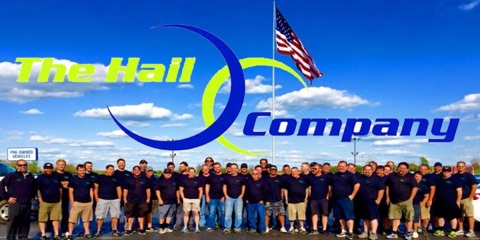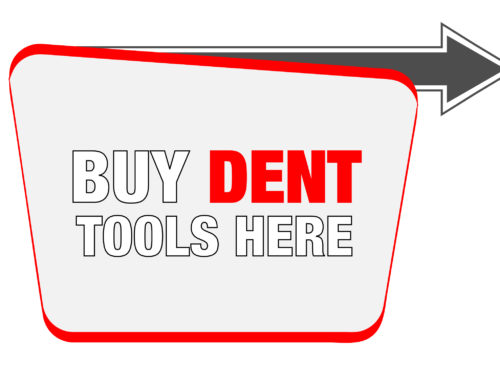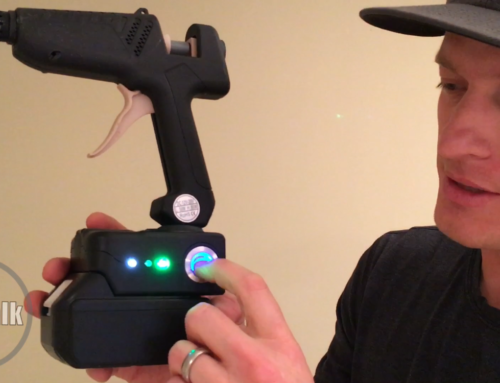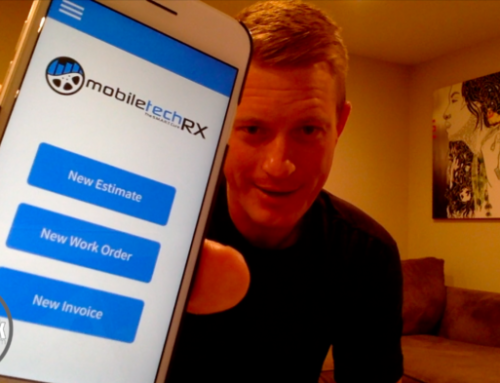interviewed and written by Richard Routson
Ryan Hampton has been repairing hail damaged cars for 14 years. Similar to other guys in the industry, Ryan’s paintless dent repair journey has been a long winding road of personal and professional growth. Those that know the talkative PDR networker now, would hardly recognize the timid quiet painter back in 2001.
THE DISCOVERY
Ryan discovered PDR when a body shop he was painting cars for in St. Louis, Missouri was hit with one of the largest, most expensive hail storms to ever hit North America.
“It was softball sized hail. Every car in our lot was destroyed. It was so bad I called the police in the morning and told them we had been vandalized.”
The body shop contracted the PDR work to a hail chaser who taught Ryan the basics of the trade over the next year in exchange for paint work that was required on the damaged cars. The following year Ryan made the difficult decision to leave his day job and work his first hail storm pushing dents 5 hours from home. After his first hail gig, that was just okay, Ryan returned home and tried to establish a local PDR route. He struggled all winter trying to find work and provide for his family.
“I had one good dealership account that I was able to bill five to eight hundred dollars a week. Everything else was random rock lots and wholesalers. I was broke. I sold everything I could on ebay; paint guns, grinders, my Rusty Wallace Snap-On tool box. By February it was grim. I was three months behind on my mortgage. I even thought about selling the house and going back to painting cars.”
THE STORM
When he was literally down to his last dollar, Ryan’s one dealership was hit by a perfect hail storm.
“It was the best hail damage I have ever worked. You’re talking 60-75 dime to nickel sized dents on 2002 Cavaliers, Malibus, Colorados, Silverados. It was perfect.”
That one storm changed everything. Ryan was able to put a couple guys to work, pay off his bills and stash some cash. It hailed in his hometown the next 4 years. Ryan’s business grew to the point where he was servicing 40 body shops. He had 1 year round employee and several contractors he would call when he got overloaded with work.
“It was a hail route. I only had the one dealership and then a bunch of body shops. I would fix hail when it hit and then fix stragglers the rest of the year.”
CHASING HAIL
All good things must come to an end. Starting in 2007 St. Louis hit a 4 year hail drought. When opportunity arose elsewhere, Ryan hit the road and traveled around the country pushing dents, staffing storms, and setting up deals. With time and experience came knowledge. Ryan met a ton of dent guys and learned the intricacies of the industry. He also came out of his former timid shell and became a natural salesman through repetition and rejection.
“Honestly, I think sales forced me to come out of my shell. I would walk into a shop scared to death, and then realizing when I walked out without a deal, So what. Constant rejection made me a better person. I know I’ve had a good sales day when I’ve had 40 people tell me no. Because out of that 40, I’ve had one or two people tell me yes. When I wake up in the morning at a hail storm, I want to see if I can get 50 no’s, because that means I’m working my ass off.”
LESSONS LEARNED
While traveling around the country Ryan was able to witness the vast differences in how storms were managed and staffed. Some operations ran like clockwork and everyone made good money. However, the majority of the industry was unprofessional and haphazard.
“Some of these hail sites were a disaster. You’ve got guys working in cut off jean shorts and sleeveless AC/DC shirts next to overflowing trash cans. Cars are parked in front of service bays. Guys are traipsing through the showroom using the wrong bathrooms.”
“I learned a lot. There is one formula to be successful in this business. You have to love what you do and do the right thing. Whenever you have decisions to make about anything, just make sure your choice is the right thing to do for everyone involved. When you do the right thing, good guys see that and want to work with you. Overtime you end up in a situation where you’ve got crews of high character guys all over.”
Ryan also learned the responsibility and stress associated with landing a big hail gig. The thrill of landing the sale is instantly followed by the process of figuring out how to get it covered.
“Once I land a big deal, I have to figure out how many guys I need and who to call. Now I have to decide who is going to provide for their family for the next three months and who’s not. That will wear on you, man.”
BROKER TO MANAGEMENT TEAM
Back in the old days before online forums, smartphones, apps, and social media; the hail repair industry was very fragmented and isolated. Hail brokers held a lot of power when it came to putting individual techs to work. Guys with a long list of technicians would get called to staff a storm. They would put those guys on the list to work and collect a percentage of the revenue generated. Often times those brokers would collect their “finder’s fee” and be completely absent from the storm site. They offered very little support or any management to the individual contractors fixing the cars.
Ryan noticed this pattern and tried to change the cycle when he formed his new hail management company in 2014, The Hail Company. His business model focuses on teaming up with local PDR techs and regional PDR companies all over the United States, when they get hit with hail. Ryan wants to help those companies service their accounts as efficiently and profitably as possible with processes and systems that ensure a smooth and drama free experience for everyone involved.

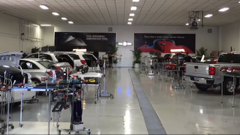
SYSTEMS
“I modeled my business after process oriented companies like Carmax and Quick Trip. You have to have protocols in place, and have high character guys that are going to follow that protocol and present a professional image for the local guy they are working for.”
When it comes to technicians’ income, the hail world is all about percentages. One of Ryan’s systems addresses this issue, by distributing percentages according to what roles and tasks each person is responsible for.
“I’m not just setting up deals, going home and collecting 30%. Myself or my managers are constantly present and available to handle any issues that arise. Also, if techs want to step up and take on certain tasks they are going to get payed for it. If guys want to just push dents and roll through cars, they’re making 70%. If you want to push dents and manage a shop, you’re getting 80% + 10% off of the other guys. Do you want to sell? Okay, if you land a deal you get 10% of that deal. The system is certainly not perfect, but it works for now, and I’m always looking to improve it.”
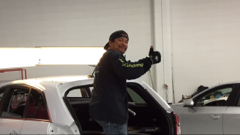
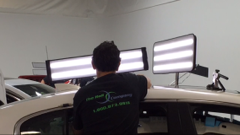
Getting paid on time is also a big deal in the hail repair industry. A lot of independent contractors have been paid late and ripped off because the broker or PDR company they were working for couldn’t manage the high cash flow associated with the business. Ryan has a system to address this major issue. As soon as he shakes hands on a deal, Ryan tells the GM or manager that the usually policy of paying vendors after 30 days will not work.
“Hail is different. We need to be payed every week. The first thing I do is meet with the accountants and controller. I tell them we will turn in a statement every Thursday, and we need to be payed the following Monday, no questions asked. If they don’t comply I walk away from the deal. Usually it is not an issue. It’s all about building those relationships and keeping an open dialogue. I’ll even trade cell phone numbers and text accountants back and forth when needed.”
Managing the work flow of a storm and staffing it with the right number of guys can be challenging as well. You have to anticipate the amount of cars that will need to be repaired, how long the storm will last, along with figuring out where to put guys so they maximize their skill set. Some guys want to put their heads down and crank through wholesale cars, while other guys excel at retail and body shop gigs. Finding the right fit is crucial. Ryan also thinks there is a proper way to let guys move on once a storm starts to slow down.
The hail repair industry is a very frantic, fast paced, and profitable business when managed correctly. Ryan’s goal is to bring order to the chaos and help local guys finish a storm with more accounts than they started with. According to several positive testimonials in PDR insider social media groups, Ryan is headed in the right direction.
PASSION & GOALS
“I love this business. People ask me, well what if you won 10 million dollars. Would you still work? I always tell them, I’d buy the nicest truck I could find and drive it to the next storm. I enjoy the people. I love the thrill of the sale, and I love putting guys to work.”
Ryan feels as if he has created a system and culture within his company that will only grow larger and better over time. He is looking forward to the next hail season and doesn’t think he will leave the industry any time soon.
“I’ve got it setup now. It’s almost like we’re in the starting blocks. I’m excited for 2016.”
“My goal is to have my own network of local PDR companies that I work with. If I continue to build relationships all over the country, in five years I should be able to say, I don’t care where it hails. I’ve got work.”
“Will I still be working in 10 years? Heck yeah. I love it man. Will I be pushing? Hopefully not. My goal is to never push a dent again. I feel like my skill set and knowledge is better served in the operations and networking role that I have created with The Hail Company.”
To learn more about Ryan Hampton, connect with him on Facebook and visit his company website:
